You are probably familiar with the Great Lakes: Lake Michigan, Superior, Erie, Huron and Ontario. Maybe you have vacationed at Lake Tahoe or visited the Great Salt Lake. Minnesota claims to be the “Land of 10,000 Lakes”. But do you know a country with 187,000 lakes? How did that many lakes form in one place? What country has the most lakes? Are all lakes formed the same way? Let’s find out!
What country has 187,000 lakes?

Finland is home to around 187,000 lakes.
©Pawel Radomski/Shutterstock.com
The country with 187,000 lakes is Finland. It is called “The Land of a Thousand Lakes”. Obviously, 187,000 is a little more than a thousand (the actual number to date is 187,888) but we get the gist of it. Finland is located in Northern Europe, found right next to Sweden and Norway. It also borders Russia and has a significant coastline along the Baltic Sea. The population of Finland is 5.5 million with the majority of the people living in the southern half of the country.
Where are the 187,000 lakes?
Most of the larger lakes are in the southeastern area of the country with the third-largest lake located way up in the northeastern corner. Smaller lakes are scattered throughout the country. In fact, you might not see Finland on lists of “Countries with the Most Lakes” because so many of their lakes are smaller than the required range. The lakes they count are all over 5 acres which is roughly the size of 4 football fields.
What are the biggest lakes in Finland?
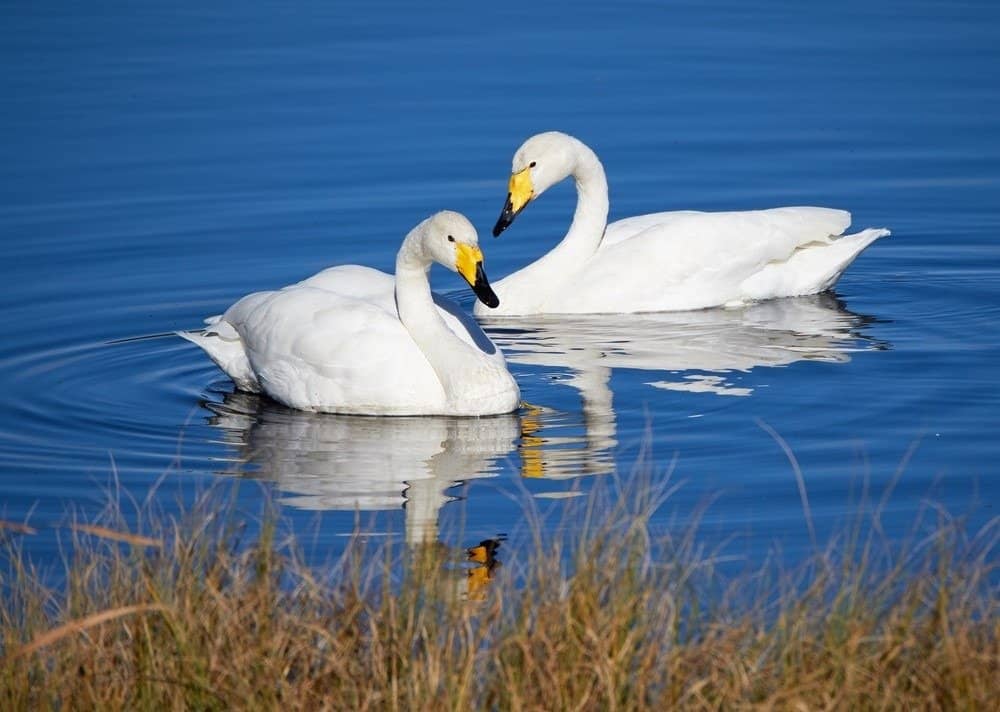
Two whooper swans enjoying one of the beautiful, clear lakes in Finland.
©Teemu Tretjakov/Shutterstock.com
The five biggest lakes in Finland are:
- Lake Saimaa (443 square miles): located in southeastern Finland
- Lake Pӓijӓnne (407 square miles): located in southcentral Finland
- Inari Lake (400 square miles): located in the far northeastern Finland
- Lake Pielinen (335 square miles) located near the eastern border
- Lake Oulujӓrvi (358 square miles) located in the middle of the country
Why are there so many lakes in Finland?
Around 10,000 years ago, the area we call Finland now was covered with continental glaciers. When those glaciers started to melt, due to climate change, they dragged along the surface of the land. This left gaping basins behind that filled with the melting ice and snow. Piles of rock and sediment left behind, called moraines, also make dams at the edges of lakes keeping the water contained in one place.
What are Glaciers?
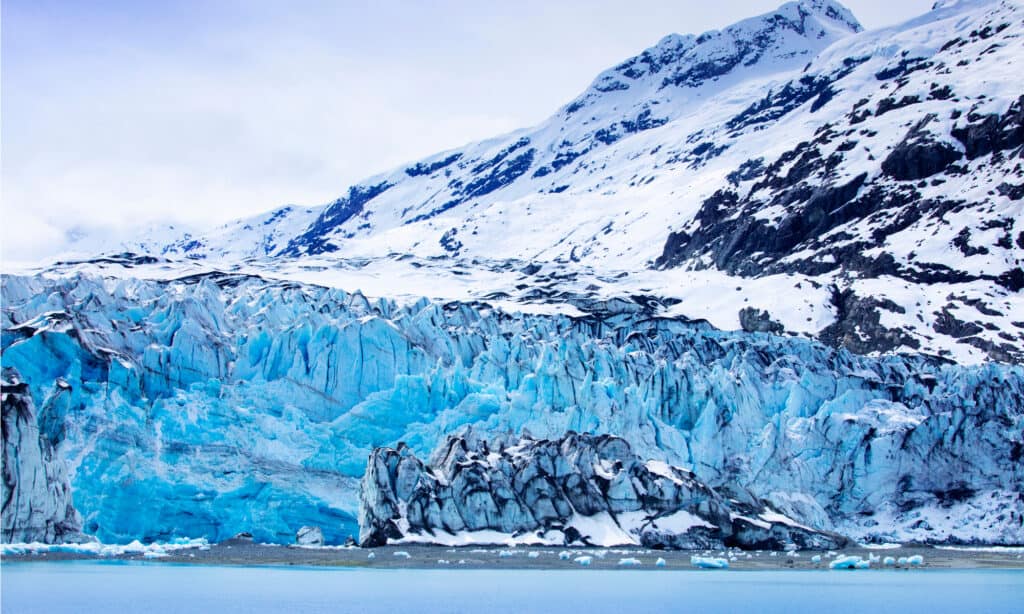
Glacier Bay National Park and Reserve in Alaska is an example of a glacier that still exists today.
©wu hsoung/Shutterstock.com
Glaciers are large “piles” of snow, ice, rock, and sediment that build up over time. Think about a typical 4-month winter in the northern states. After each snowfall, people will shovel or snow blow their driveways. On the edge of the driveway, there will be layers and layers of snow built up after each shoveling. This snow pile is similar to a glacier. By the end of the winter, these piles can get quite large! Now imagine a snow pile forming over hundreds and hundreds of years. When the temperature gets too warm the snow and ice underneath starts to melt and glaciers starts to move.
Where are glaciers found?
Around 10,000 years ago much of the northern area of the Northern Hemisphere was covered in glaciers, including Finland, Sweden, Norway, much of Russia, Canada, and northern North America. As the temperatures got warmer the glaciers started to shift, which created the land formations we know today (including the glacial lakes). According to the USGS (U.S. Department of the Interior) the breakdown of the current glaciers is:
- 91% in Antarctica
- 8% in Greenland
- Less than 0.5% in North America (about 0.1% in Alaska)
- 0.2% in Asia
- Less than 0.1% are in South America, Europe, Africa, New Zealand, and Indonesia
Are all lakes formed the same way?

Crater Lake in Oregon is the deepest lake in the United States. It was formed by a volcano (Mount Mazama) that collapsed 7,700 years ago.
©Matthew Connolly/Shutterstock.com
No, not all lakes are formed by Glaciers. Most of the lakes in Finland, Russia, Canada, and Alaska are all formed by glaciers. But here are a few other ways lakes are formed:
- Glaciers
- Volcanoes
- Shifting Earth plates (plate tectonics)
- Overflowing rivers
- Mudslides and landslides
- Artificial Lakes (made by people)
- Beavers
Fun Fact: Beavers can make lakes
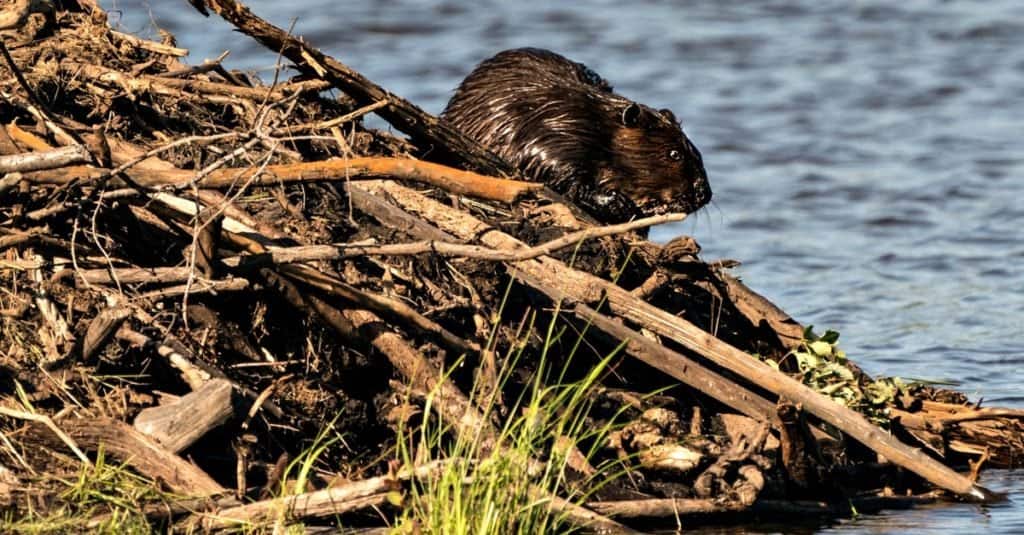
The largest beaver dam is 7-football fields long! Beavers can make lakes form with their dams.
©Rejean Bedard/Shutterstock.com
The world’s largest beaver dam is in Wood Buffalo National Park, in Canada by the Birch Mountains. Beavers build dams using logs, branches, and mud. They use their large, chiseled front teeth to cut down trees. They work together to block off water flow and create lodges to care for their young. These beavers in Canada have created the largest dam that is 7-football fields long! The lake they created is 70,000 sq. meters and around one meter deep! Amazing!
Does Finland have the most lakes in the world?
Finland does not have the most lakes, but it is one of the countries with the most lakes. Although they do not always show up on the lists due to the fact that many of their lakes are small.
What countries have the most lakes in the world?
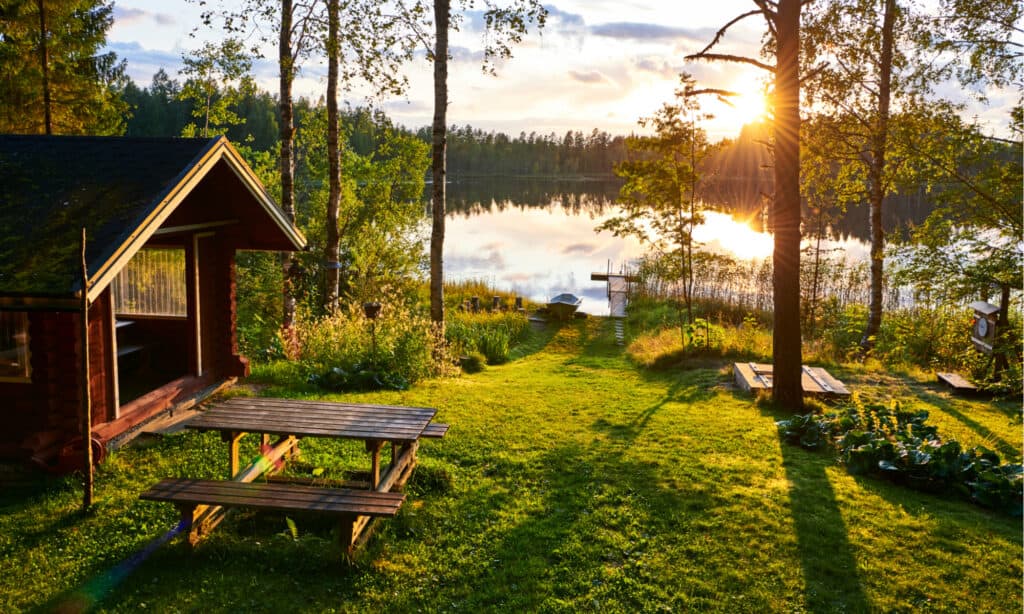
Canada has the most lakes in the world with 879,800 lakes.
©ArCaLu/Shutterstock.com
The countries that have the most lakes are Canada (879,800), Russia (201,200) and the United States (102,500). There was a study conducted and published in Nature that attempted to count lakes across the world. While Canada may have the highest total number of lakes, the volume of lakes water from Russia’s lakes is much higher. The Caspian Sea (bordering Russia), has 41% of the world’s total lake volume. Among freshwater lakes, just four lakes (Baikal, Tanganyika, Superior, and Malawi) contain the majority of freshwater in lakes across the world.
Incredibly, small lakes like the ones often found in Finland (measuring less than 10 kilometers of surface area) contribute just 2% of the world’s water volume despite being the vast majority of lakes across the world!
What states have the most lakes?
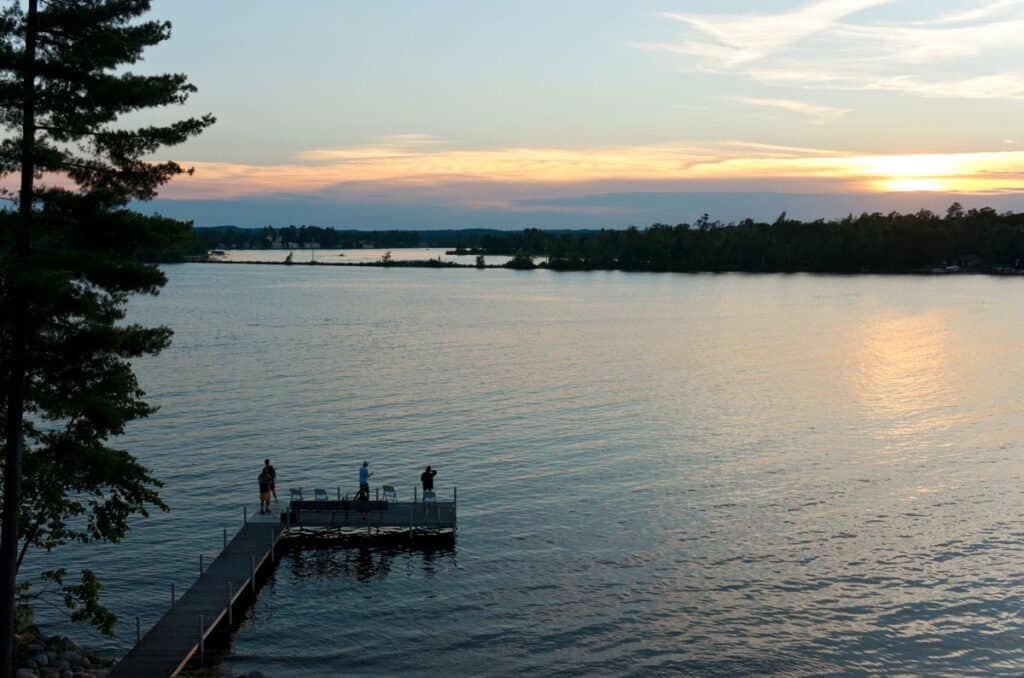
Minnesota is known as “The Land of 10,000 Lakes”. It has the second most lakes in the United States.
©iStock.com/jferrer
Alaska, Minnesota, and Wisconsin have the most lakes in the United States. Minnesota has more named lakes but Alaska has thousands of unnamed lakes in remote areas. Alaska has 3,197 named lakes and an estimated 3 million unnamed lakes (although, most would be too small to reach the required size most counts of lakes use). Minnesota has 15,291 named lakes and Wisconsin has 6,044 named lakes.
Can you vacation on Finland’s lakes?
Yes. Some of the lakes in Finland are popular tourist destinations. Many are lined with residential homes and cottages. Lake Saimaa is the largest and offers a variety of activities like swimming, boating, and hiking. You can visit many of the beautiful islands and fjords. For the ultimate time in nature head north, all the way past the arctic circle, to Inari Lake. This lake boasts water so clear you can see nine meters deep. If you visit in the summer you will get the benefit of 24-hour sunlight as the sun doesn’t set for two months. Whichever lake you decide to visit be sure to make time for a famous Finish sauna!
The photo featured at the top of this post is © Della_Liner/Shutterstock.com
Thank you for reading! Have some feedback for us? Contact the AZ Animals editorial team.







